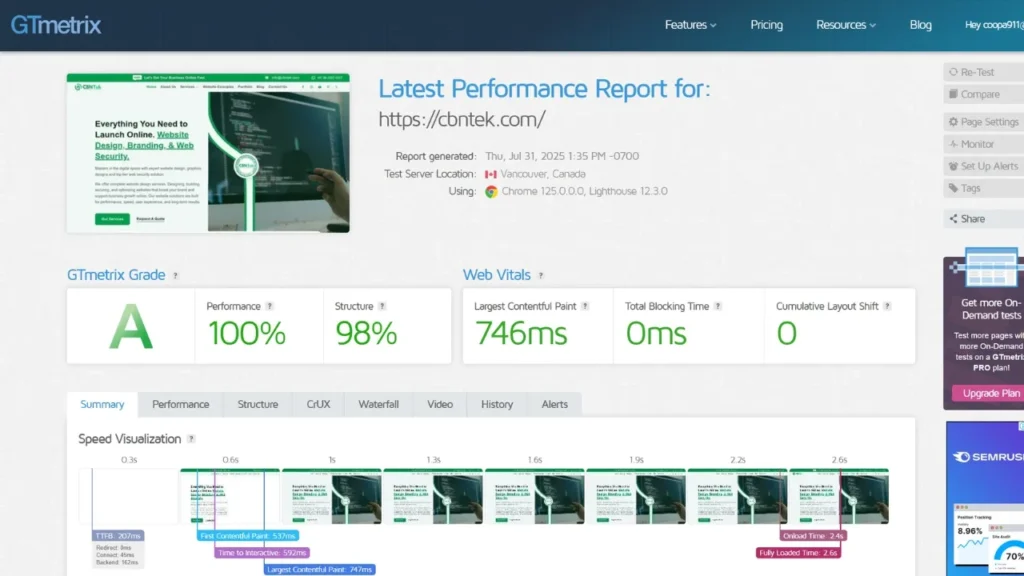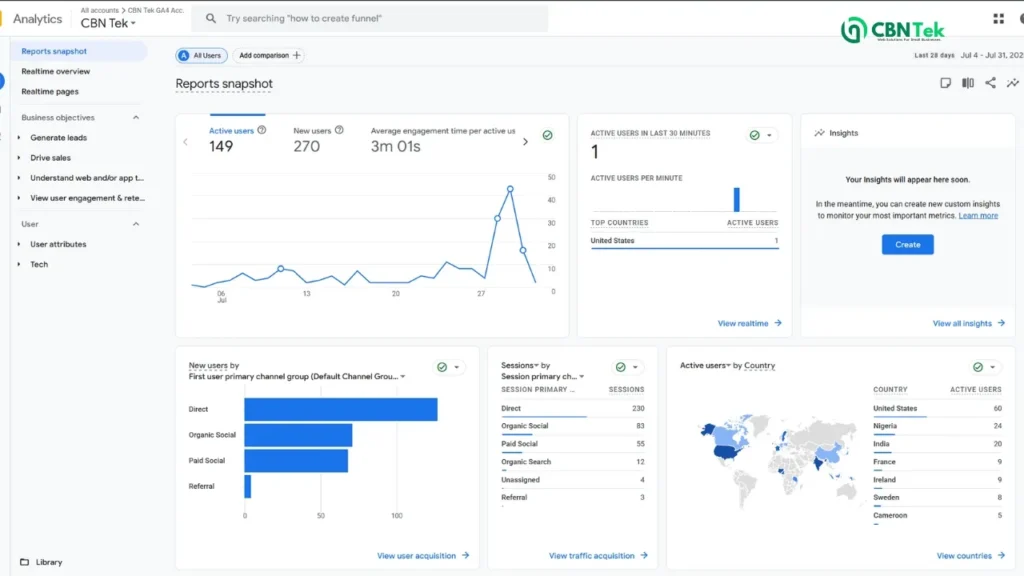The Make-or-Break Moment
Picture this: You’ve poured months of work into your dream website. The design looks flawless, the content sparkles, and you’re ready to hit that “publish” button. But wait, launching a website without proper preparation is like opening a restaurant without checking if the kitchen actually works.
I learned this the hard way five years ago when I didn’t know to implement these important steps before launching a website. I launched my first client’s e-commerce site. Within hours, we discovered broken checkout forms, missing SSL certificates, and a mobile experience that looked like it was designed in 1995. The client wasn’t thrilled, and frankly, neither was I.
That nightmare taught me something crucial: what to do before launching a website can make the difference between digital success and spectacular failure. Today, I’m sharing my tested important steps before launching a website, a pre-launch checklist that’s saved countless launches and probably a few careers since then.
Table of Contents
Why Your Pre-Launch Process Actually Matters
Here’s the thing about website launches: you only get one first impression. When potential customers land on a broken site, they don’t think, “Oh, they probably just launched.” They think, “These people don’t have their act together.”
A proper website launch preparation isn’t just about avoiding embarrassment, it’s about:
- Protecting your brand reputation from day one
- Maximizing conversion rates instead of losing visitors to technical issues
- Avoiding the panic-inducing 3 AM emergency fixes that drain your sanity
- Building search engine trust from the moment you go live
Let me walk you through the essential launch website steps that separate the pros from the amateurs.
Step 1: Test Your Website Like Your Business Depends on It (Because It Does)
Before you even think about going live, you need to put your site through its paces. Think of this as your website’s final exam.
Speed Testing: The Need for Speed
Website testing before launch starts with speed. In our instant-gratification world, a slow site is a dead site. I use GTmetrix religiously because it gives you actionable insights, not just scary numbers.
What to check:
- Page load times under 3 seconds
- Image optimization scores
- Server response times
- Mobile performance metrics

Cross-Browser Compatibility: Playing Nice with Everyone
Your site might look perfect in Chrome, but what about Safari? Firefox? Even (shudder) Internet Explorer for those stubborn corporate users?
Test your site across:
- Chrome, Firefox, Safari, Edge
- Different operating systems
- Various screen resolutions
- Mobile and tablet devices
Step 2: Mobile-First or Mobile-Last Place
How can I ensure my website is mobile-friendly before launch? This question keeps me up at night because too many businesses still treat mobile as an afterthought.
Here’s your mobile reality check:
- Over 60% of web traffic comes from mobile devices
- Google uses mobile-first indexing
- Mobile users are less patient with slow or broken experiences
Your Mobile Testing Arsenal
| Tool | Purpose | Why It Matters |
|---|---|---|
| Google Mobile-Friendly Test | Basic mobile compatibility | Free and directly from Google |
| Chrome DevTools | Responsive design testing | Built-in browser testing |
| Real Device Testing | Actual user experience | Nothing beats the real thing |

Step 3: SEO Foundation That Actually Works
Which SEO elements must I check before publishing a site? Great question. SEO isn’t something you bolt on later, it’s built into your site’s DNA.
Your Pre-Launch SEO Checklist
Title Tags and Meta Descriptions: Every page needs unique, compelling titles and descriptions. I’ve seen too many sites launch with “Page 1” as their homepage title.
Header Structure: Your H1, H2, and H3 tags should tell a logical story. Search engines read your headers like a table of contents.
Image Alt Text: Not just for accessibility (though that’s crucial), but the alt text gives you more opportunities to include relevant keywords naturally.
XML Sitemap: Submit this to Google Search Console before launch. It’s like giving Google a roadmap to your content.
Internal Linking: Connect your pages logically. Every page should be reachable within three clicks from your homepage.
Step 4: Analytics Setup (Your Crystal Ball)
How do I set up tracking and analytics prior to launching? This is where data nerds like me get excited. Analytics aren’t just numbers but they’re clear insights into human behavior interacting with your website.
Essential Tracking Setup
Google Analytics 4: The new standard for understanding your audience. Set up goals and conversions before you launch, not after.
Google Search Console: Your direct line to Google. This tells you how your site performs in search results.
Google Tag Manager: The Swiss Army knife of tracking. Makes adding and managing tags infinitely easier.
Heatmap Tools: Hotjar or similar tools show you exactly where users click, scroll, and get stuck.

Step 5: Security That Actually Protects
What security measures are critical before launching a new site? In 2025, website security isn’t optional aspect, it’s existential and crucial.
Non-Negotiable Security Steps
SSL Certificate: That little padlock in the address bar isn’t just decoration. It’s trust, rankings, and basic security rolled into one.
Security Plugins: For WordPress sites, Wordfence is my go-to. It’s like having a bouncer for your website.
Strong Passwords: Use Bitwarden or similar tools. Setting passwords such as “password123” stopped being clever around 2003.
Regular Backups: UpdraftPlus for WordPress, or your hosting provider’s backup solution. Because Murphy’s Law applies especially to websites.
Step 6: Legal Compliance (Boring but Crucial)
What legal requirements need to be addressed pre-launch? This isn’t sexy, but it’s necessary. One privacy violation can cost more than your entire website budget.
Legal Must-Haves
Privacy Policy: Required by law in many jurisdictions. Use Cookiebot for GDPR compliance if you have European visitors.
Terms of Service: Protects you and sets expectations for users.
Cookie Consent: Not just for Europe anymore. Many regions require clear cookie consent.
Accessibility Compliance: Follow WCAG guidelines. It’s the right thing to do, and it’s increasingly legally required.
Step 7: Content Quality Assurance
Your content is your voice. Make sure it’s saying what you intended.
Content Checklist
Proofreading: Grammarly catches what tired eyes miss. Typos destroy credibility faster than slow loading times.
Image Optimization: Large images kill page speed. Compress everything through tools like To WebP and use the webp image format.
Link Testing: Use Screaming Frog to catch broken links before your users do.
Call-to-Action Clarity: Every page should guide users toward a specific action.
Step 8: Performance Optimization
What tools should I use to test my website’s speed and performance? Speed isn’t just user experience, but it’s also a very critical ranking factor.
Performance Testing Tools
GTmetrix: Comprehensive performance analysis with actionable recommendations.
Google PageSpeed Insights: Direct insight into how Google views your site’s performance.
Pingdom: Real-time monitoring that alerts you to issues.
Quick Performance Wins
- Compress images (WebP)
- Enable browser caching
- Use a Content Delivery Network (CDN)
- Minimize HTTP requests
- Optimize database queries

Step 9: Backup and Recovery Planning
How should I back up my website before making it live? This is your insurance policy. Hope you’ll never need it, but be grateful when you do.
Backup Strategy
Full Site Backup: Everything files, database, configurations.
Regular Schedule: Daily for active sites, weekly for static ones.
Multiple Locations: Local and cloud storage. Redundancy saves lives (and websites).
Test Restores: A backup you can’t restore is just wishful thinking.
Step 10: Final Quality Assurance Review
This is your dress rehearsal. Everything should work perfectly before the curtain goes up.
Your Pre-Launch Testing Protocol
User Journey Testing: Walk through every possible user path on your site.
Form Testing: Submit every form with valid and invalid data.
Shopping Cart Testing: If you’re e-commerce, test the entire purchase process.
Cross-Device Testing: Phone, tablet, desktop. Your website should shine everywhere.
Creating Your Personal Pre-Launch Checklist
How do I create a pre-launch checklist for my website project? Here’s a framework you can customize:
Essential Categories
| Category | Key Items | Tools |
|---|---|---|
| Technical | Speed, security, backups | GTmetrix, Wordfence, UpdraftPlus |
| SEO | Meta tags, sitemaps, internal links | SEMrush, Screaming Frog |
| Analytics | Tracking setup, goal configuration | Google Analytics, Tag Manager |
| Legal | Privacy policy, terms, compliance | Cookiebot, legal templates |
| Content | Proofreading, optimization, testing | Grammarly, TinyPNG |
Common Pre-Launch Mistakes That Kill Websites
I’ve seen these mistakes destroy launches more times than I can count:
Skipping Mobile Testing: Your desktop-perfect site might be unusable on phones.
Forgetting Analytics: You can’t improve what you don’t measure.
Ignoring Page Speed: Slow sites don’t just frustrate users, but they get penalized by Google which also hurts your SEO.
Missing Legal Pages: One GDPR violation can cost more than your entire website.
No Backup Plan: When (not if) something goes wrong, backups save the day.
Tools That Make Pre-Launch Testing Effortless
The right tools transform overwhelming checklists into manageable workflows:
Project Management: Trello keeps everyone on the same page during launch preparation.
Design Assets: Canva ensures your final images look professional and load quickly.
SEO Auditing: Ahrefs or Moz Pro catch issues before they impact rankings.
Performance Monitoring: Cloudflare provides CDN, security, and performance optimization in one package.
Your Website Launch Success Blueprint
Here’s your action plan for the next 48 hours:
Day 1: Technical Foundation
- Run speed tests and optimize
- Install security measures
- Set up backup systems
- Test mobile responsiveness
Day 2: Content and Analytics
- Proofread all content
- Configure tracking and analytics
- Test all forms and functionality
- Review legal compliance
Launch Day: Final Checks
- One last speed test
- Verify analytics are tracking
- Test critical user journeys
- Monitor for immediate issues
The Bottom Line: Launching Right Matters
Website launch preparation is about being professional. Your audience expects a flawless experience from minute one, and search engines reward sites that deliver it.
The steps we’ve covered aren’t suggestions, they’re requirements for any serious web presence. Skip them at your own risk.
Remember, launching a website is like performing on stage. The audience doesn’t care about your backstage preparation, they only see the final performance. Make sure it’s worth their applause.
Ready to launch with confidence? Start with this checklist, adapt it to your specific needs, and never let a broken website embarrass you or your business reputation again.
What’s the biggest launch disaster you’ve experienced or heard about? Share your story, we’ve all been there, and there’s wisdom in shared mistakes.




















0 Comments